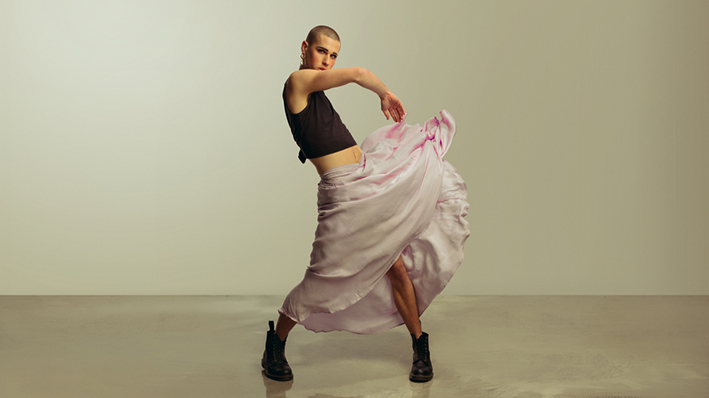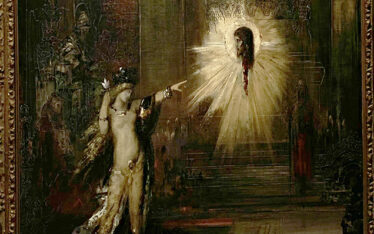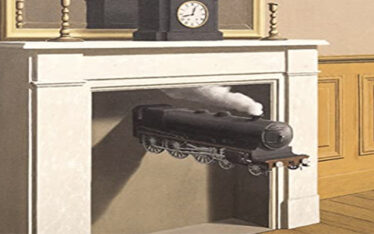
JacobLund/Shutterstock.com
Growing up in the ballet world, I found the gender binary and its stereotypes reinforced for the sake of performance.
PRIOR EXPECTATIONS
Appealing to the audience’s expectations of what role each gender should play, much consideration was given to how a performance would be received rather than how it would feel.
Appealing to the very feminine idea of what a ballet dancer should be, I wondered how members of the queer and non-binary community felt having to put on this gendered performance of femininity. That is when I began learning about queer dance.
gender expression
In a traditional ballet performance, the woman is the figure “on display” as she is particularly restricted by her pointe shoes. The man is charged with supporting and moving her so she is able to maintain this light and fragile appearance for the audience.
In contrast to traditional ballet audiences, queer dance creates a brand-new space, free of traditional viewing expectations.
Queer dance offers an alternate space to the limiting stereotypes of masculinity and femininity in the dance world. “Queer” as a label aims to move “beyond the binary of cisgender and heteronormativity.” The term, previously a homophobic slur, was reclaimed in the early 1990s by members of the LGBTQ+ community with organizations such as “Queer Nation.”
ALTERNATIVE SPACE
In addition, queer theory was established in literature in the 1990s. An example of the adoption of the word “queer” in academia would be “queer studies” as a department, which often replaced “gay and lesbian studies” as a more inclusive term.
“Queer” is an umbrella term today as the queer community takes back agency over the previously pejorative word, which villainized them.
Dance, in particular, offers the space to demonstrate that gender is a social construct and that moving bodies produce meaning that can incite action.
multiple identities
Queer dance’s intersectionality interplays with multiple genders, sexualities and racial identities. Queer dance shatters conventional ideas of gender identity. There are multiple definitions and interpretations of what “queerness” is.
New and ever-changing definitions of “queer” highlight not only its individualism, but that a central concept of queerness is resistance. Whether this be resistance to a set definition or social resistance to normative identity categories, “queer” unified communities with the potential for protest and political assertion.
Queer dance consequently threatens society’s binaries as they provide a space, which not only allows but encourages freedom of expression. There is not one singular definition for queer dance, as its performance involves blurring the lines of what is thought to be “masculine” and “feminine” dance and appearance.
POSITIVE POTENTIAL
Central to queer dance is the notion of “gender performance” that ideas of gender are learned through culture. Popular culture, such as movies and fashion, encourage and even dictate certain behaviors and images of gender as acceptable.
In queer dance, there are performances of hyper-masculinity, such as “macho” dancers, and hyper-feminine performances such as drag queens or even satirical ballets. An additional component of queer dance is interactive and immersive performance.
The relationship between the performers and the audience are different than in traditional concert spaces, as the audience can be called on or danced with.
EXPOSED TO COMMUNITY
Engaging the audience personally implicates them in the performance, which increases the possibility that the audience may question their pre-conceived notions of gender and sexuality. Through queer dance and performance, people who may not have previously had the chance can now be exposed to the queer community.
Queer dance acts as a vehicle for increased awareness and potential social change. Thinking critically about the relationship between community and performance, the commercialization of queer dance raises new question of mainstream images of the queer community.
Queer dancers and creators wrestle with the give and take between increased representation and possible negative representation of queer performers and art.
gaining acceptance
The idea that queer dance is not as “noble” or recognized as traditional heterosexual forms of dance such as ballet marginalize queer dance as simply for entertainment.
The reluctance to acknowledge the skills and technicality of queer dancers is an example of the refusal to accept queer dance as a “valid” form of dance. In addition, non-queer platforms profiting off of queer shows makes me wonder… who is truly in control of how these performers are viewed and portrayed.
Queer dance also opposes the divisive stereotypes of masculinity dictating who should practice dance. Queer dance raises the conversation of toxic masculinity and the discomfort associated with viewing men dance.
AN EXPRESSIVE ART
Dance as an expressive art requires a level of comfort with one’s emotions, which is a stereotypically “feminine” characteristic. Queer dance removes these gender-specific labels, and consequently the taboo associated with masculine emotion.
Traditional forms of dance solely portray thin, conventionally attractive and heterosexual love to conform to the audience’s viewing expectations. Consequently, this results in the quasi-impossibility for change in traditional viewing spaces.
Queer dance eliminates this cycle by combatting any viewing expectation at all. The objective of queer dance is working to overcome these gender differences and categories maintain for the comfort of the viewer.
boundary defying
The progressive and boundary-defying nature of “queer” is not without nuance, as the concept of “queer” is often synonymous to “whiteness” and being “of the West.” Questions of access, privilege, and stereotypes arise as queer dance maintains its commitment to being a crucial medium and space to challenge social norms.
Queer dance exists at the intersection of the social, the political, and the sexual, and offers an alternative as well as a critique of traditional gender binaries in dance.
There are conversations to be had about agency over the queer body in relation to performance while raising hope for new spaces for freedom of expression.
About the Article
A look inward at the social impact of ballet that disgards traditional feminine and masculine imagery.



